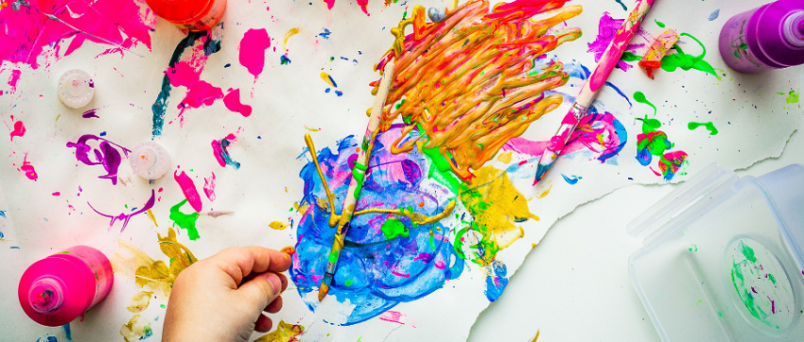If you’ve ever found solace in expressing yourself through art, you might have inadvertently experienced the therapeutic benefits of the creative process. Art therapy goes beyond just drawing; it is a powerful form of psychotherapy that taps into the depths of human emotions and psyche. In this article, we will delve into the world of art therapy, exploring its various facets, its effectiveness, and how it goes far beyond the simple act of drawing. This article is provided by anxietyfightersguide.com
The Essence of Art Therapy
Art therapy is a form of expressive therapy that encourages individuals to use art and creative techniques to communicate, explore emotions, and address psychological conflicts. It is based on the belief that artistic expression can help individuals unlock their inner thoughts and feelings, providing a safe outlet for self-discovery and healing.
The Power of Creativity in Healing
Art therapy, which is a powerful tool for self-expression and emotional healing, utilizes the creative process to tap into the subconscious mind, allowing individuals to discover what is art therapy and express emotions that might be difficult to verbalize. People can access their deeper thoughts and process unresolved issues through painting, sculpting, or other artistic methods.
Beyond Drawing: Exploring Various Art Forms
While drawing is a commonly used medium in art therapy, it is not the only option. Art therapists employ various artistic techniques, including painting, collage making, clay sculpting, and even photography. Each method offers unique benefits, allowing patients to find the most suitable way to express themselves.
Art Therapy Techniques in Practice
Art therapy sessions are typically conducted in a safe and non-judgmental environment, where the therapist guides the individual through the creative process. The focus is on the act of creation rather than the final result, encouraging free expression without the pressure of producing a masterpiece.
Unraveling Emotions through Symbols
Art therapists pay close attention to the symbols and imagery that emerge in the artwork. Colors, shapes, and patterns can all carry significant meanings, providing insights into the individual’s emotional state and thought processes.
The Therapeutic Alliance
The relationship between the art therapist and the participant plays a vital role in the effectiveness of art therapy. Building trust and rapport allows for a deeper exploration of emotions and encourages the individual to open up during the creative process.
Art Therapy for Various Populations
Art therapy is a versatile form that can be applied to different age groups and populations. It is used in schools, hospitals, rehabilitation centers, and mental health facilities, addressing various emotional and psychological challenges.
Art Therapy’s Impact on Mental Health
Numerous studies have shown the positive impact of art therapy on mental health conditions such as depression, anxiety, and post-traumatic stress disorder (PTSD). The creative process can help individuals manage their symptoms and develop healthy coping mechanisms.
Empowerment and Self-Discovery
Engaging in the creative process empowers individuals by giving them a sense of control and agency over their emotions. Art therapy helps people discover new aspects of themselves, fostering personal growth and self-awareness.
Breaking Barriers and Enhancing Communication
Art therapy provides an alternative means of expression for individuals who struggle with verbal communication. It breaks down barriers and allows individuals to communicate their thoughts and feelings without relying solely on words.
Art Therapy in Addiction Treatment
Art therapy has also proven to be valuable in addiction treatment. It allows individuals to explore the underlying issues contributing to their addiction and aids recovery.
Art Therapy in Trauma Recovery
Trauma can be deeply buried within the subconscious mind. Art therapy helps individuals process trauma, providing a safe space to confront and heal from painful experiences.
The Future of Art Therapy
As awareness of mental health and holistic healing approaches grow, art therapy’s future looks promising. Integrating art therapy into standard mental health care may become more prevalent as its effectiveness gains recognition.
Is Art Therapy for You?
If you find it challenging to express your emotions through words, feel overwhelmed by your thoughts, or seek a unique form of self-discovery, art therapy might be worth exploring. Consult with a certified art therapist to discover how this expressive therapy can benefit you.
In conclusion, art therapy is not merely about drawing; it is a powerful and transformative form of psychotherapy that enables individuals to access their innermost emotions and thoughts. Individuals can find healing, empowerment, and self-discovery through various artistic techniques. The therapeutic alliance between the art therapist and the participant plays a pivotal role in the success of this process.
FAQs about Art Therapy
Is art therapy suitable for children?
Art therapy is highly beneficial for children as it provides them with a non-threatening way to express themselves and process their emotions.
Can I participate in art therapy even if I have no prior artistic skills?
Absolutely! Art therapy is about the process, not the end result. Prior artistic skills are not necessary to benefit from art therapy.
How many sessions of art therapy are usually needed to see results?
The number of sessions required varies depending on individual needs and goals. Some people experience positive effects after a few sessions, while others may need more time.
Can art therapy be used in conjunction with traditional talk therapy?
Yes, art therapy can complement traditional talk therapy approaches, providing an additional dimension to the therapeutic process.
Is art therapy only for individuals with mental health issues?
No, art therapy is beneficial for anyone seeking a creative and introspective way to explore emotions and promote personal growth.

